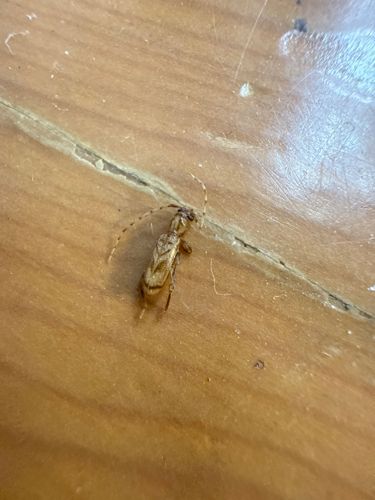Longhorn Beetle
Scientific Name: Cerambycidae (Family)
Order & Family: Order: Coleoptera, Family: Cerambycidae
Size: Typically ranges from 1 to 6 cm (0.4 to 2.4 inches), although some species can be smaller or larger.

Natural Habitat
Found in wooded areas, forests, near trees, sometimes indoors if attracted by lights or emerging from wood.
Diet & Feeding
Adults often feed on pollen, nectar, sap, or sometimes leaves. Larvae (grubs) are wood-borers, feeding on the wood of trees (living, dying, or dead).
Behavior Patterns
Adult longhorn beetles are often nocturnal and attracted to lights, or diurnal and found on flowers or tree trunks. Females lay eggs in bark crevices or wood. Larvae bore into wood, creating tunnels, and can spend several years in this stage before pupating and emerging as adults. Some species mimic wasps or ants.
Risks & Benefits
Potential risks include damage to trees and wooden structures (homes, furniture) by the wood-boring larvae. They are considered pests in forestry and to timber industries. Benefits include their role as decomposers, breaking down dead wood, which contributes to nutrient cycling in ecosystems. They also serve as a food source for other animals.
Identified on: 9/11/2025